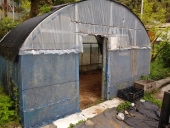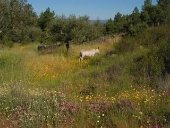




"People may doubt what you say, but they will believe what you do."





List of Bryant RedHawk's Epic Soil Series Threads We love visitors, that's why we live in a secluded cabin deep in the woods. "Buzzard's Roost (Asnikiye Heca) Farm." Promoting permaculture to save our planet.




"People may doubt what you say, but they will believe what you do."
















List of Bryant RedHawk's Epic Soil Series Threads We love visitors, that's why we live in a secluded cabin deep in the woods. "Buzzard's Roost (Asnikiye Heca) Farm." Promoting permaculture to save our planet.




"People may doubt what you say, but they will believe what you do."












 3
3




List of Bryant RedHawk's Epic Soil Series Threads We love visitors, that's why we live in a secluded cabin deep in the woods. "Buzzard's Roost (Asnikiye Heca) Farm." Promoting permaculture to save our planet.
 1
1




"People may doubt what you say, but they will believe what you do."




















List of Bryant RedHawk's Epic Soil Series Threads We love visitors, that's why we live in a secluded cabin deep in the woods. "Buzzard's Roost (Asnikiye Heca) Farm." Promoting permaculture to save our planet.




Marcus Billings wrote:Hi Todd,
I wasn't sure that there was anything that could slow down autumn olive. I wish I ship you some the hundreds I have. Redhawk's take on the bark splitting is in line with what I've seen in the past with a few other species. One question, is this on mature bushes? I ask, because I've never really given much thought to the lifespan of these bushes. (Mostly because I can't seem to get rid of them no matter what I do) I've seen similar bark cracks in the past and they always seem to be on big, mature autumn olives. Again, not sure of the "average lifespan". Just a thought.

"People may doubt what you say, but they will believe what you do."




Standing on the shoulders of giants. Giants with dirt under their nails




Permaculture...picking the lock back to Eden since 1978.
Pics of my Forest Garden




"People may doubt what you say, but they will believe what you do."
















List of Bryant RedHawk's Epic Soil Series Threads We love visitors, that's why we live in a secluded cabin deep in the woods. "Buzzard's Roost (Asnikiye Heca) Farm." Promoting permaculture to save our planet.




Tj Jefferson wrote:Wow that is surprising. Todd we were discussing other legumes on that thread and it may be that caragana is a better bet. Russian olives are super hardy as well, but my experience is that they don't like wet feet and that may be true of the autumn olives as well.
What is growing in damp areas around there? Can you getindigobush?
 The Pea Shrubs and the Seaberry bushes are both doing well considering, although they are getting some leaf-yellowing. I actually got my first Seaberries this year. I've never tried one before. Looking forward to it.
The Pea Shrubs and the Seaberry bushes are both doing well considering, although they are getting some leaf-yellowing. I actually got my first Seaberries this year. I've never tried one before. Looking forward to it.
"People may doubt what you say, but they will believe what you do."








 1
1





| I agree. Here's the link: http://stoves2.com |






